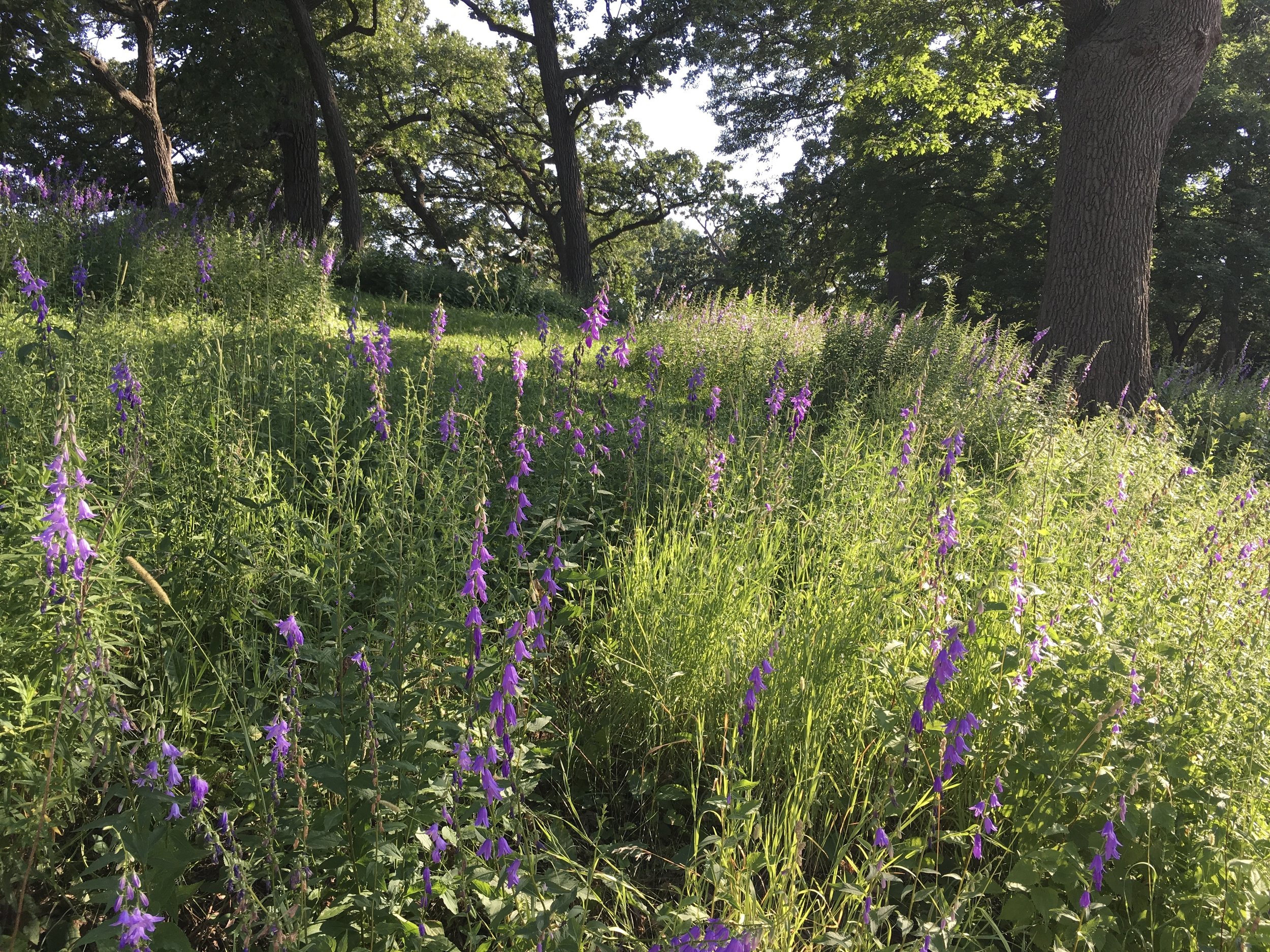Sometimes "pretty" means "quite". Sometimes it means "attractive". In the case of creeping bellflower being "pretty weedy" it means both. The plant was brought over from Europe as a garden gem. It really looks nice in the right place in a garden. Unfortunately, it really likes living here and has a hard time staying in just one place. The roots quietly creep through the garden, intertwining themselves with all the other plants and getting into every nook and cranny under walkways and in foundations.
As a perennial weed it comes back and grows every year. It grows into lawns and outcompetes many grass types even if mown.
Managing the spread of this weed is a challenge. Here are a few options:
Cut spent flowers and seed heads seeds off to control longer distance spread. Weeding it out of a garden bed is fruitless unless the entire root system is removed. It looks like a white carrot connected by spaghetti to the plant and other white carrots. It's deep. It's best to start in one area and dig vertically as deep as the shovel will go and flop the soil out and work through it to remove all root fragments. Working from one edge of a garden to another works best. It's often best to remove all desirable plants first and entirely wash their roots off in a 5 gallon bucket to ensure there are no bellflower roots.
This is labor intensive. Results aren't 100%, and new plants can germimate from any seed left in the ground. a layer of mulch may help prevent seeds from germinating and establishing new plants
Chemical control isn't overly effective. Even persistent chemicals don't completely control it. Due to the strong root systems any non-systemic herbicide will be minimally effective. This means all or most of the more “environmentally-friendly” products will simple top-kill the plant and it will come back shortly.
Smothering with a thick layer of plastic covered in mulch is a less intensive option but it can take years to exhaust the root system’s will to live - and since the roots entwine anywhere possible they are often within lawn spaces and beyond the borders of a plant bed. This means they can survive and creep back in.
Before embarking on management it’s best to decide whether the goal is 100% eradication, managing the problem and keeping it from spreading, or other. It's a time-consuming and long-term process to manage. If you are in an area like Madison's near-west side where many of your neighbors likely have the weed it's likely not worth trying tp eradicate it entirely as it will likely spread back from the neighboring seed source. If you are the only property-owner around to have it, or live out of town and near a natural area it is likely entirely worth the effort to keep it from spreading.
As a reminder, be careful when sharing plants with friends and neighbors. It’s a great thing to do but remember the soil may harbor weed seeds, invasive jumping worms or eggs, or other harmful life. We often recommend washing all the soil off of roots and giving plants away bare root to reduce potential for spread. It isn't always practical and is harder on the plants but is worth the effort.
To learn more click here: http://learningstore.uwex.edu/Assets/pdfs/A3924-05.pdf





